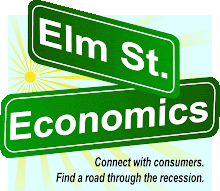A story in the New York Times this week illustrates an interesting paradox for retailers hoping to attract throngs of people on the biggest shopping day of the year: How do they keep the crowd from hurting itself and their employees on "black Friday?"
We approach the first anniversary of a tragic stampede, in which shoppers at a major discount store trampled an employee in their rush to grab limited quantities of sale items.
Implications: Competition for retail sales is very high right now. But as a backdrop to all of their strategic planning about "lost leaders" and door-buster savings... wise companies are also asking, "What if we get the crowds we hope for? Are we prepared to handle all those people in such a short time?"
Aggravating the risk of “extreme shopping” is that in an economy like this, stores will be even more compelled to sell, and shoppers will be even more compelled to save. So both vendors and buyers could be seen as “motivated” to offer/pursue door buster deals this year. Also, retailers have been learning to manage the recession for more than a year now,* so inventories have been kept low, and popular items could be in short supply. Rarity can contribute to the “rush” mentality.
Mitigating the problem: Economics have driven consumers to spread their holiday expenses over a longer period of time… easing the pain of working through those gift lists. By “black Friday,” at least some consumers will be far along with their holiday shopping… less driven by the urge to grab hours-only bargains. Their desire to start the holiday shopping season early has been answered by many retailers, who have been discounting heavily prior to Thanksgiving. Another element that could have a calming effect on shoppers on "big Friday morning:" The likelihood of press reports that will remind shoppers of last year's tragedy.
Catastrophe is not the only risk of getting massive response to an offer. If the marketer cannot fulfill on the offer in the manner consumers were led to expect, it doesn't take long for the "big event" to go from high drama... to customer service trauma.
Mike Anderson
Friday, November 13, 2009
From dangerous spectacle to manageable rush
Labels:
Competition,
Customer Service,
Economy,
Gifts,
Holidays,
PR,
Recession,
Retail
Subscribe to:
Post Comments (Atom)



No comments:
Post a Comment